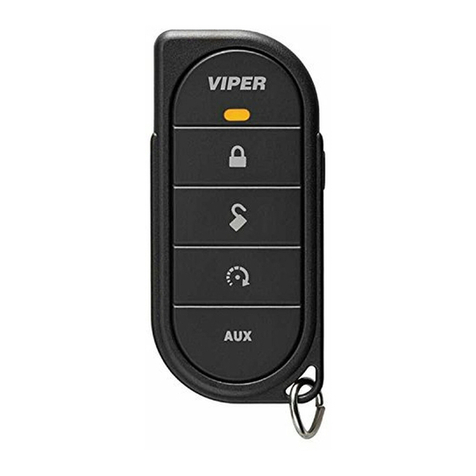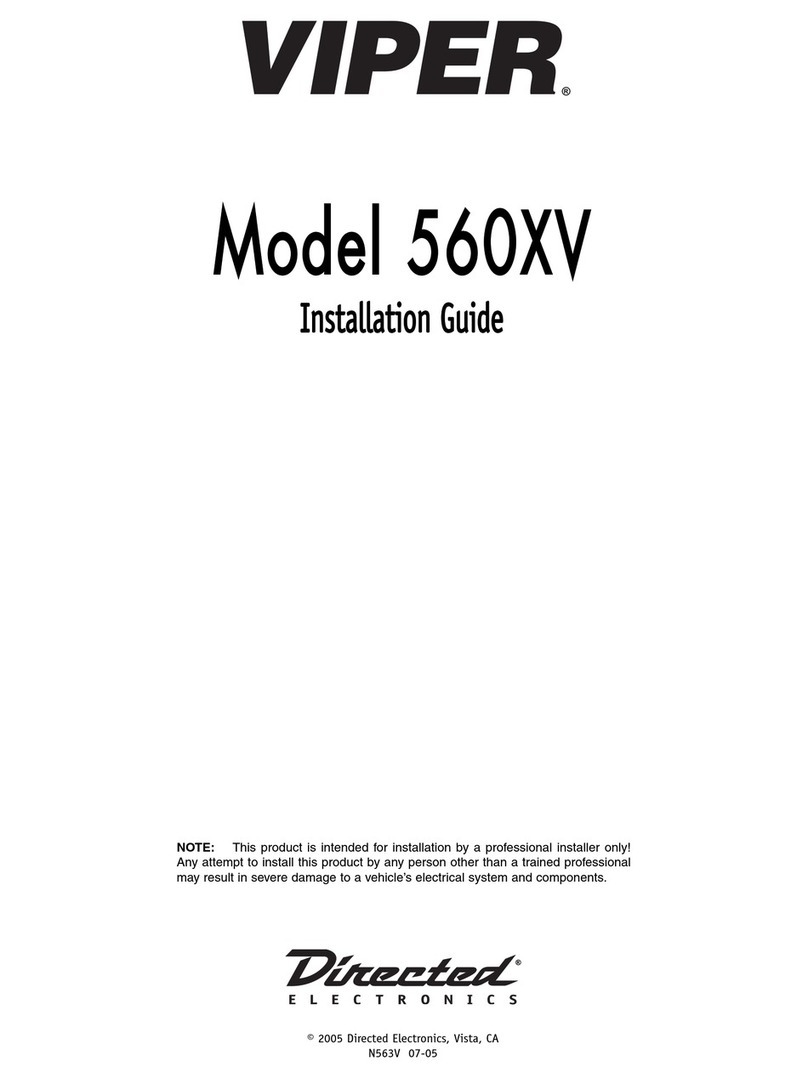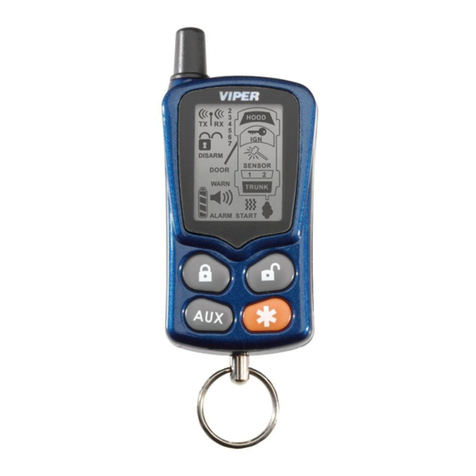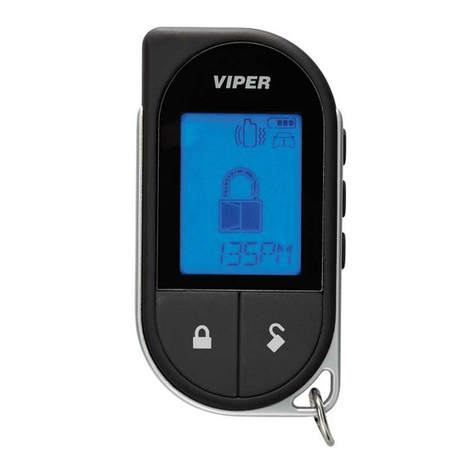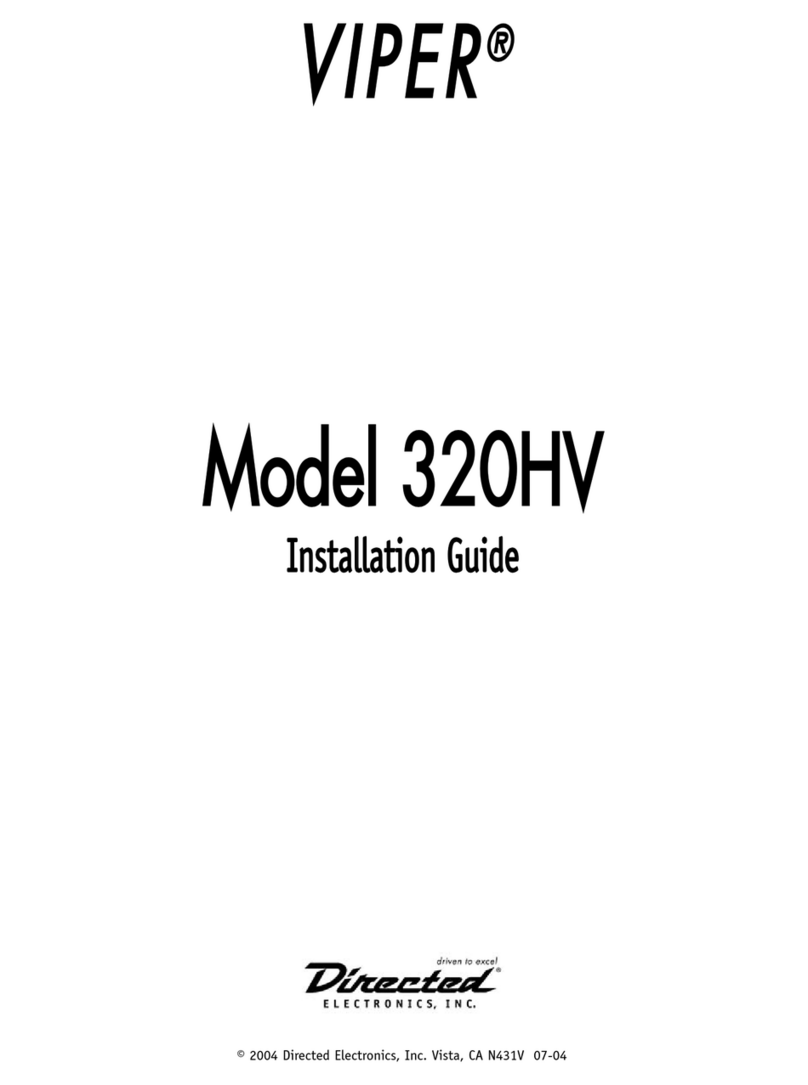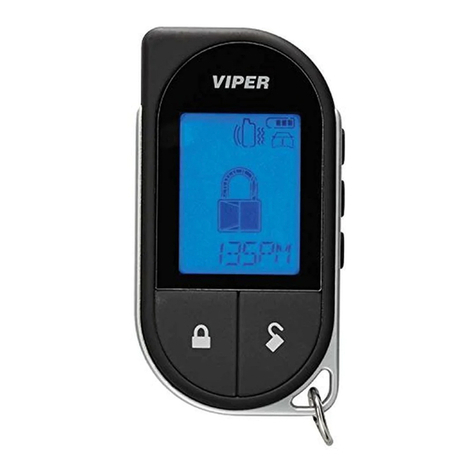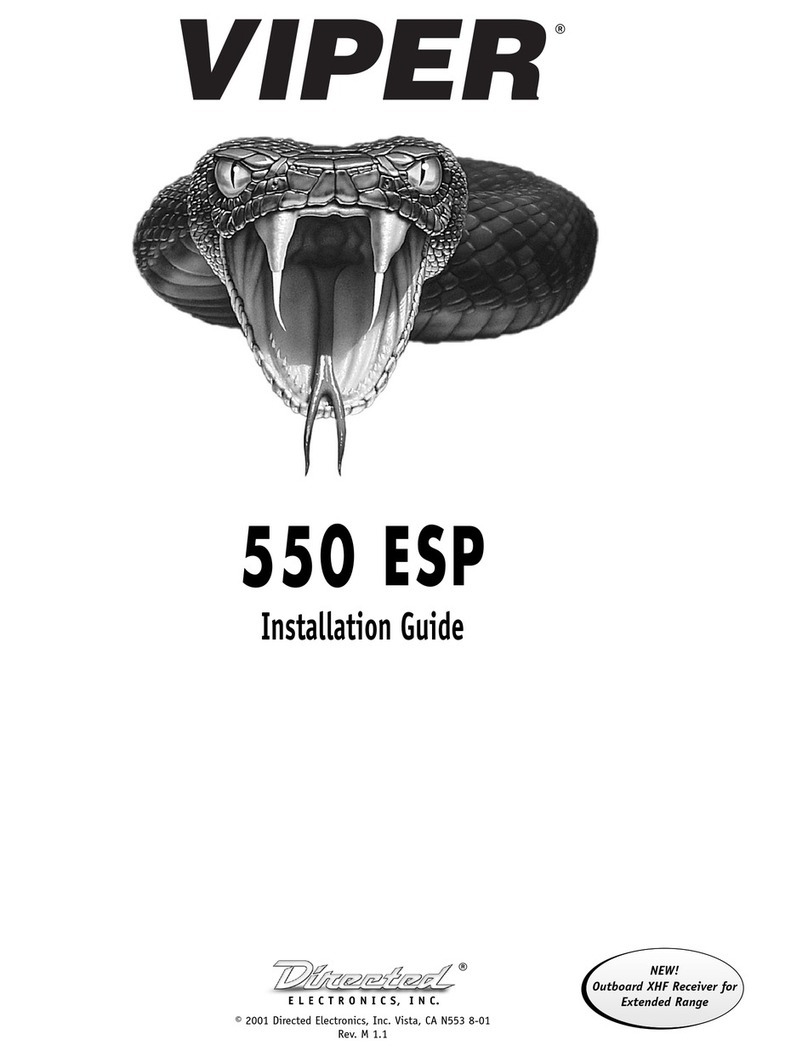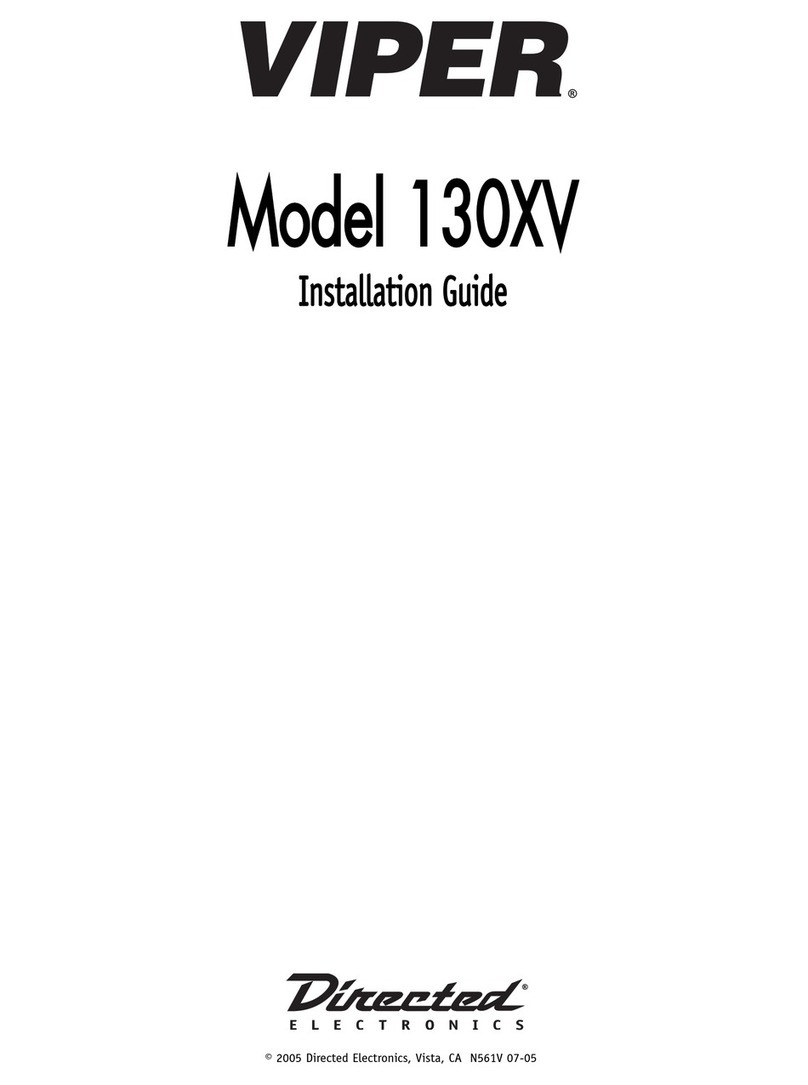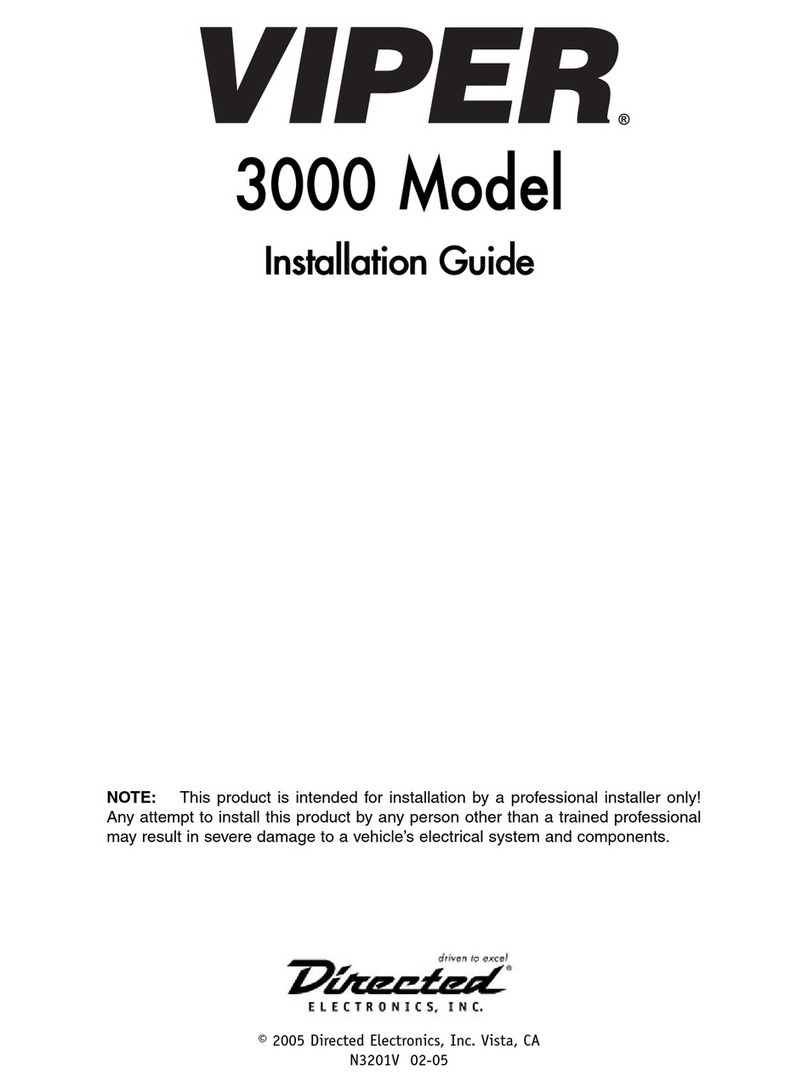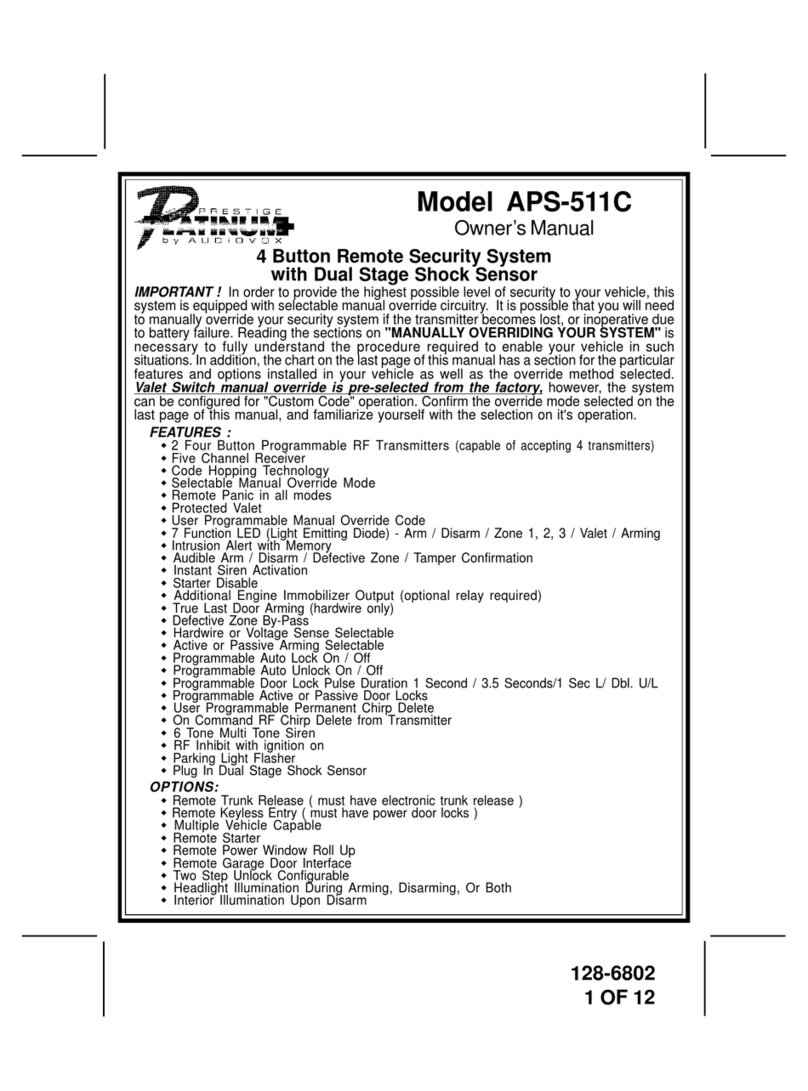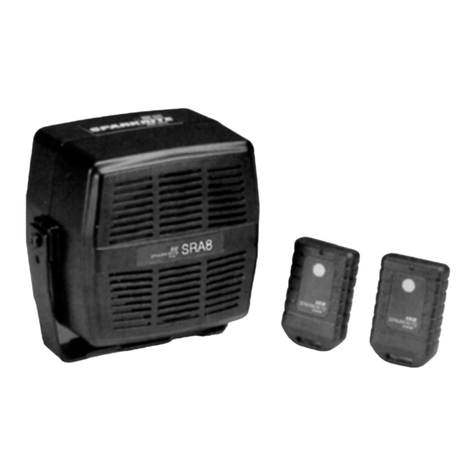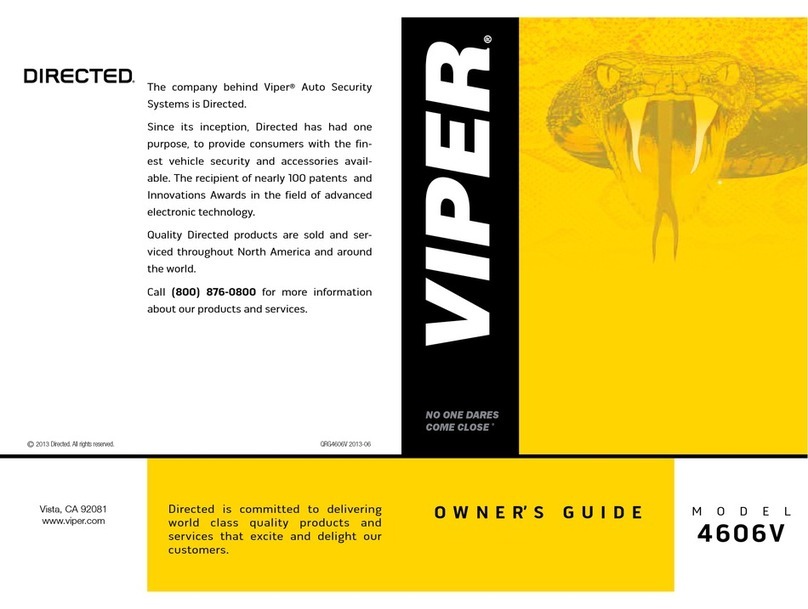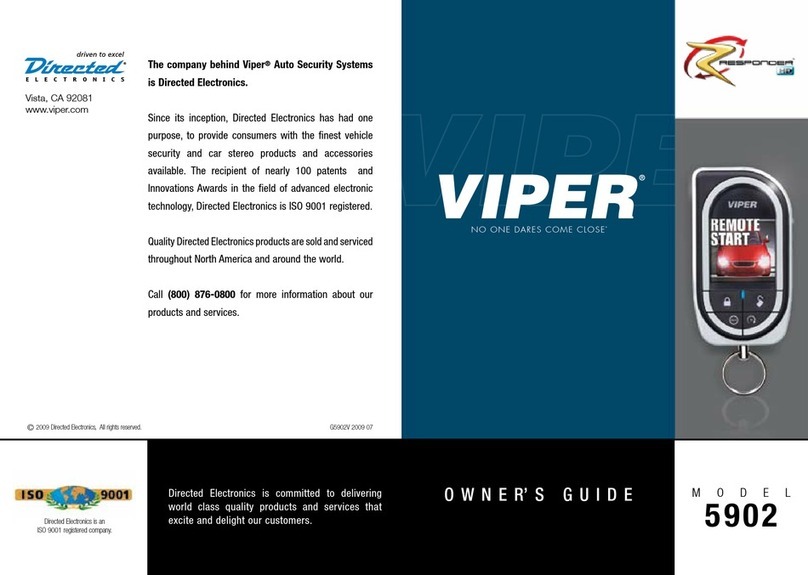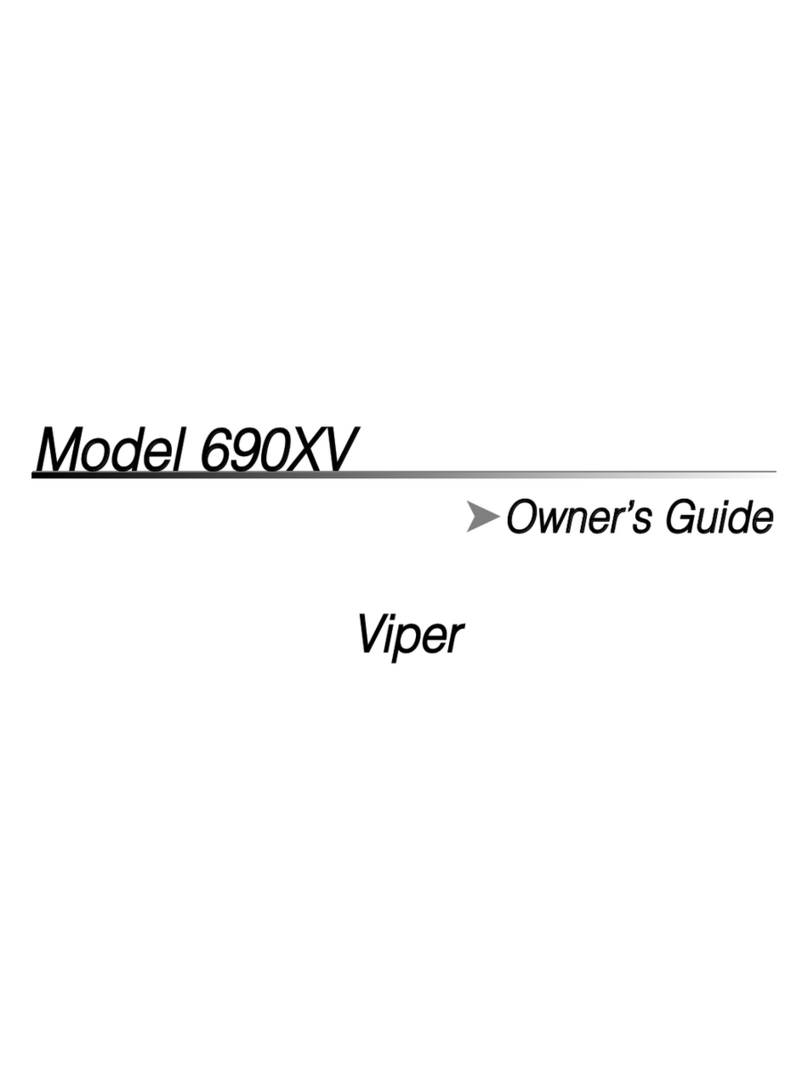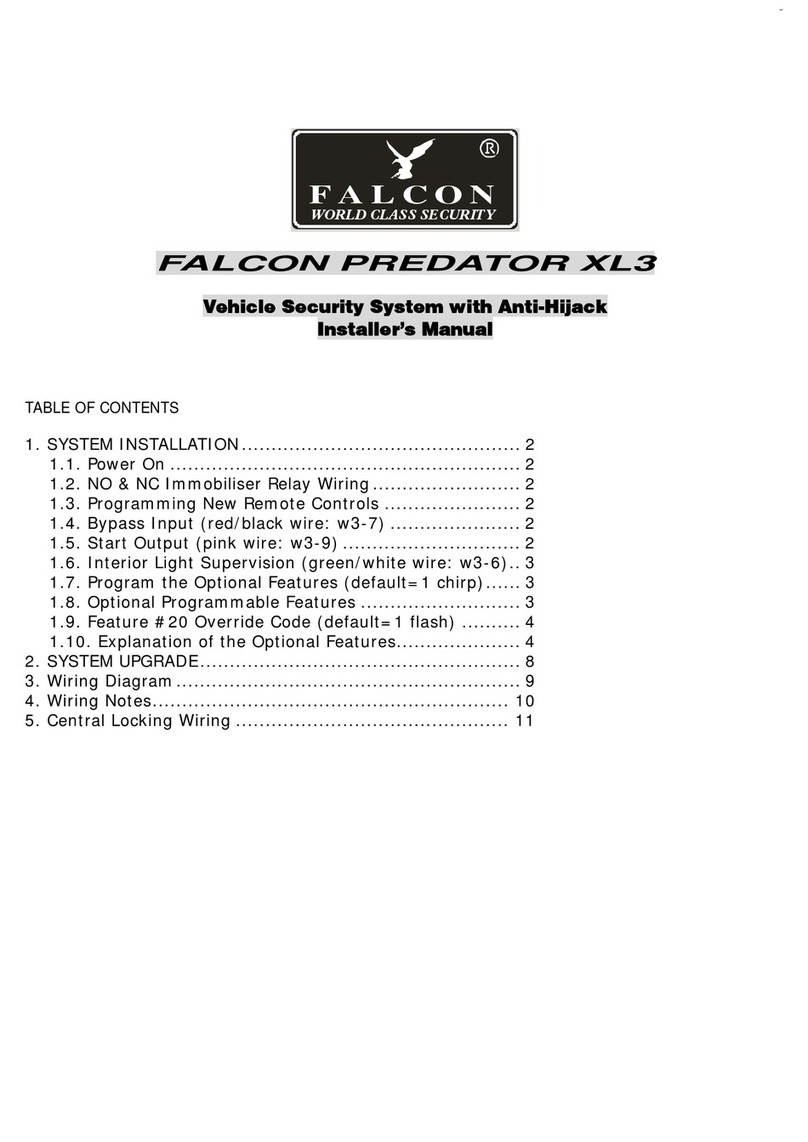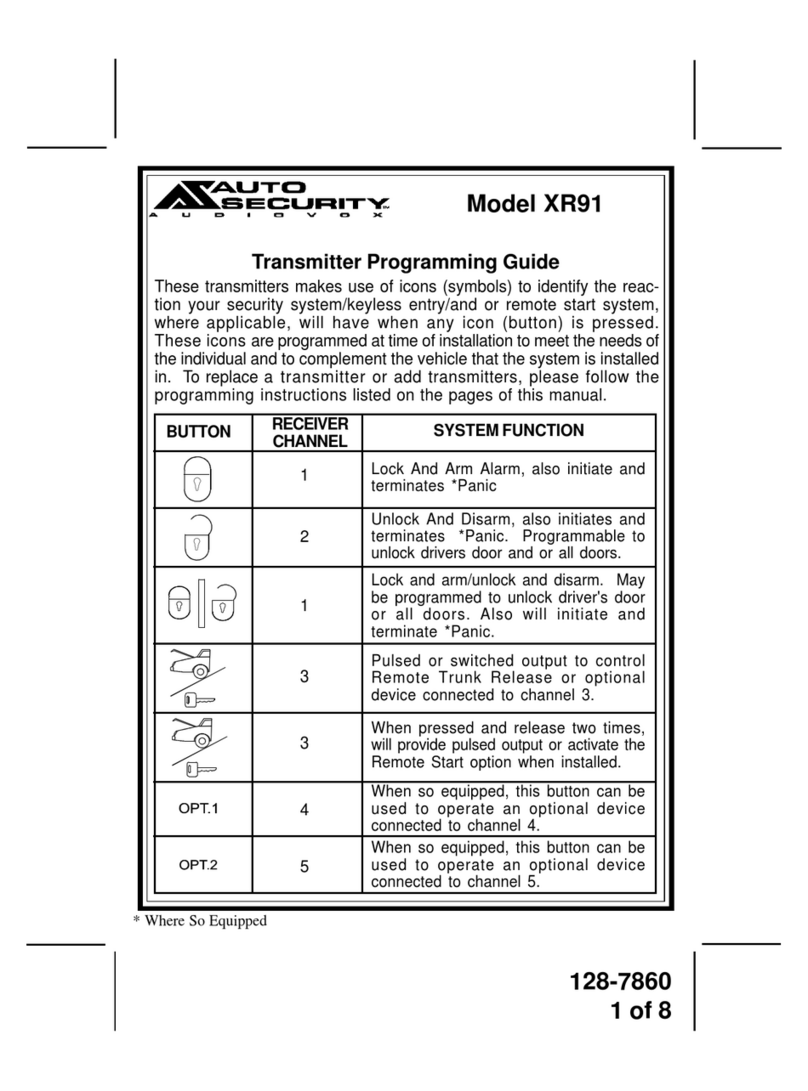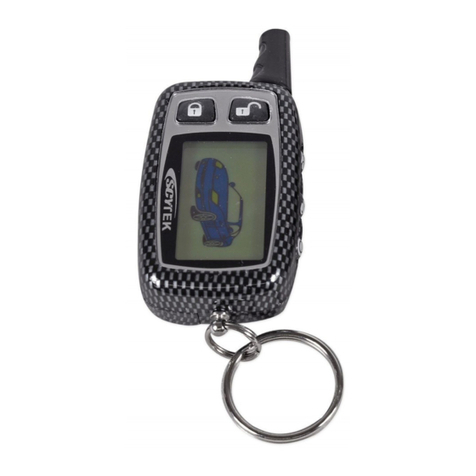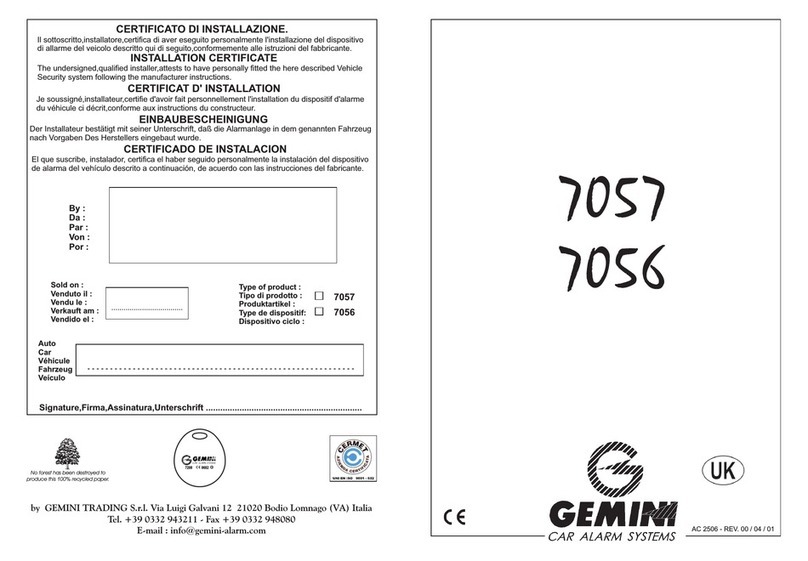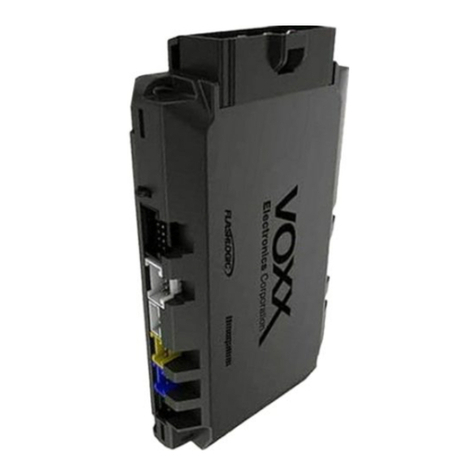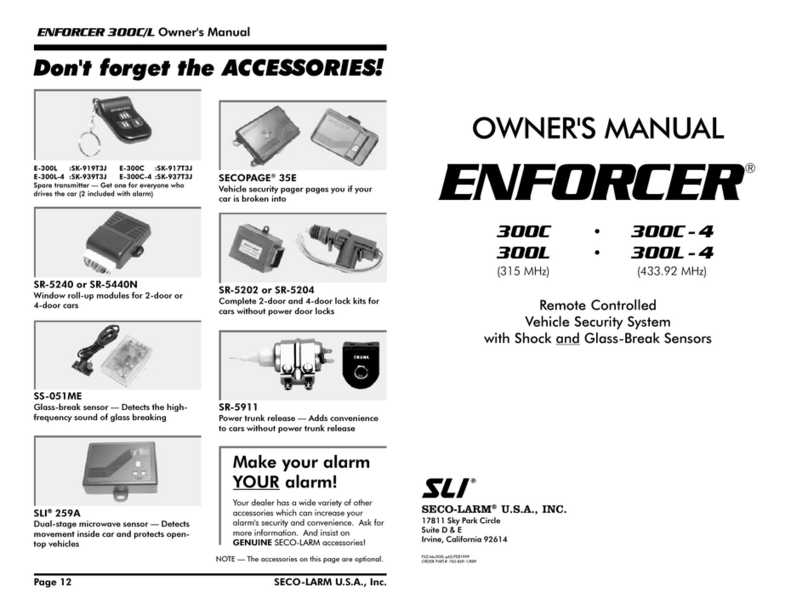
© 1995,1997 Directed Electronics, Inc. Vista, CA 697N437.597
Finding a (+) Parking Iight Wire
The(+)parking light wireis often foundnearthe switch. Manycars have theswitchbuilt into theturn signal lever,and
in these cars the parking light wire can be found in the steering column. The same wire is often available in the kick
panel or running board.
NOTE: Many Toyotas, as well as many other Asian vehicles, send a (-) signal from the switch to a relay. The
relay then sends 12V(+) to the bulbs. Whenever you have difficulty finding a (+) parking light wire near the
switch, simply test the wires at any switch or control panel
which is lit by the instrument panel lighting.
Remember, you need a (+) parking light wire that does not vary with dimmer setting.
How to find a (+) parking light flash wire with your multimeter
1. Set to DCV or DC voltage (12V or 20V is fine).
2. Attach the (-) probe of the meter to chassis ground.
3. Probe the wire you suspect of being the parking light wire. Usually,
the area near the headlight/parking light switch is an excellent area
to start, as is the kick panel.
4. Turn on the parking lights. If your meter shows (+)12V, turn off the
parking lights and make sure it goes back to zero.
5. If it does return to zero, turn the parking lights back on and, using the dash light dimmer control, turn the
brightness of the dash lights up and down.
If the meter changes more than a volt when using the dimmer,
look for another wire.
If it stays relatively close to (+)12V, you have found your parking light wire.
Finding the Door Pin Switch Circuit
The best places to find the door switch wire are:
At the pin switch
:
When testing at the pin switch, check the wire to ensure that it “sees” all the doors. Often,
the passenger switch will cover all the doors even if the driver’s switch will not.
At the dome light
:
This may not be your best choice if the vehicle has delayed domelight supervision, but
it will work in many Hondas, or any vehicle with completely diode-isolated pin switches.
Once you have determined the wire color, the easiest place to connect to the wire is often at the kick panel, at the
windshieldpillar,or intherunning board. Whenan easy locationis not available,running a wireto the domelightitself
is often the best solution.
How to find a door pin switch trigger wire with your multimeter:
1. Set to DCV or DC voltage (12V or 20V is fine).
2. InmostFords,fastenthe(-)probeofthemetertochassisground.Inmostothercars,fastenthe(+)probe
of your meter to (+)12V constant.
3. Probe the wire you suspect of being the door trigger wire. If the meter reads (+)12V when any door is
opened, you have found a trigger wire.
NOTE: Make sure the wire you use “sees” all the doors! Some newer GM vehicles lack standard-type
pinswitches. Thedomelightinthesevehiclesis turned onwhen thedoorhandleislifted. Theseusually
have a blue/white or white coming out of the door into the kick panel which will provide a (-) trigger for
all doors. Some GM vehicles (some Cavaliers, Grand Ams, etc.) have a yellow wire coming out of the
door which provides a (+) door trigger.

